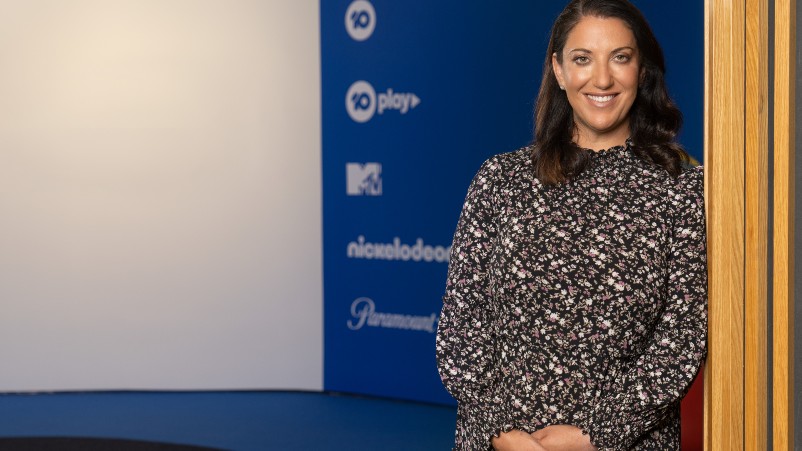BVOD, SVOD, FAST channels: 17m Aussies watch TV every week - here’s why its cultural imprinting powers, our perception of others fuel consumer spend

Broadcast TV has a ripple effect, but first you’ve got to dive in. And there’s nothing quite like reaching 17 million people per week to make a big splash.
There’s a reason television is unbeatable. Broadcast television reaches 17 million people per week – crucial, increasingly valuable mass reach as media fragments into ever more and smaller pieces. In their homes, viewers spend more hours consuming broadcast TV and broadcast video-on-demand than any other form of video content. As Paramount’s Lisa Squillace writes, mass reach and integration mean big results.
We know that the scale and reach of broadcast TV is unbeatable, but that isn’t the only advantage advertisers reap from our free-to-view platforms. Broadcast’s other advantage is its velocity in building reach. Delivering the same message, at the same time, with speed to a mass audience is the unique power of television.
What we can also do now is extend and echo this incredible impact into a diverse ecosystem of platforms using premium ad products to reach and measure impact with granular audiences. That reach is best demonstrated by TV’s biggest formats, like MasterChef Australia. The Virtual Australia (VOZ) ratings data tells us that 13.5 million Australians watched MasterChef Australia in 2022 over its run – about half the country. Of those, 12.7 million watched on broadcast TV, 1.57 million watched on 10 Play – and 718,000 of those exclusively watched on 10 Play.
With new entrants emerging every month in video and audio, mass reach in a single buy becomes even more valuable.
What happens when millions tune in to the same story?
TV leads the pack when it comes to storytelling with impact.
Fandom, attention and cultural imprinting happen when millions of Australians tune in to watch their favourite shows. Television is a conversation driver. But it’s not just talk, it’s also action, that turns into transactions. A lot of them.
The power of cultural imprinting[1] is the theory that rather than trying to change an individual’s mind, much of the power of advertising comes from changing the perceptions of a brand’s meaning within the collective culture. The way we’re perceived by others changes when we’re seen to use a particular product. For example, we may buy an electric car because we think others will perceive us as being environmentally conscious and progressive. These perceptions can only be formed by mass reach and timely campaigns that we know have been seen by others.
The power of storytelling
Reach across multiple platforms, at scale, is even more impactful for integrated bands. Brands featured within broadcast content score 21 per cent higher intention to purchase than brands not featured in content. And when the brand is the focus, it’s 46 per cent higher.
Formats such as MasterChef Australia allow for natural and deep content integration, watched by millions of engaged Australians every week. It’s why our sponsors enjoyed a 62 per cent uplift in purchase intent when sponsoring the show. This combination of mass reach and seamless integration is not available in any other medium. Sure, you can buy a homepage takeover, or a traffic sponsorship, or a big cinema buy before the latest blockbuster, but only TV provides both mass reach and deep integration opportunities.
Whether it’s a winning dish on MasterChef Australia that you can order to your door from Deliveroo, a spike in people ordering KFC after watching a challenge episode on Australian Survivor, or increased year-on-year sales for Bedshed after featuring on I’m A Celebrity… Get Me Out Of Here! – with broadcast TV, you can have your cake and eat it too.
Ease of trading
When brands become a key character in the story, they truly harness the power of TV.
The Ultimate Classroom, produced in conjunction with Defence Force Recruiting, demonstrates the power of long-form content to tell a story that informs, engages, and entertains. Defence Force Recruiting found a unique way to deliver their message and engage their audience through television. After launching on broadcast television, The Ultimate Classroom amplified its reach on 10 Play (BVOD) and became the first brand-funded program on subscription service, Paramount+ (SVOD). Paramount is the only media company with the ability for advertisers to access so many platforms with one campaign and one team.
With a direct pipeline to over $18 billion of global content, Paramount offers advertisers something unique with broadcast, BVOD, SVOD and soon to be launched FAST (Free Ad-Supported TV) channels. This means more pathways for audiences to engage with brands.
Our Australian-first announcements with KERV Interactive, Samba TV and Twitter Australia, bolster our commitment to provide marketers with advertising solutions to reach the consumers of today and tomorrow.
Conclusion
With focus being pulled in multiple directions, whether it’s the big screen, the small screen or every screen in between, advertisers have a harder job than ever to reach mass audiences at scale, with velocity.
And that’s what broadcast TV does best - the big splash, the high impact, the conversation starter, the cultural shift. Brands continue to harness the power of television, beyond the living room and into positive brand experiences and sales.
Broadcast TV has a ripple effect, but first you’ve got to dive in. And there’s nothing quite like reaching 17 million people per week to make a big splash.
[1] https://meltingasphalt.com/ads-dont-work-that-way/ (Cultural Imprinting)
